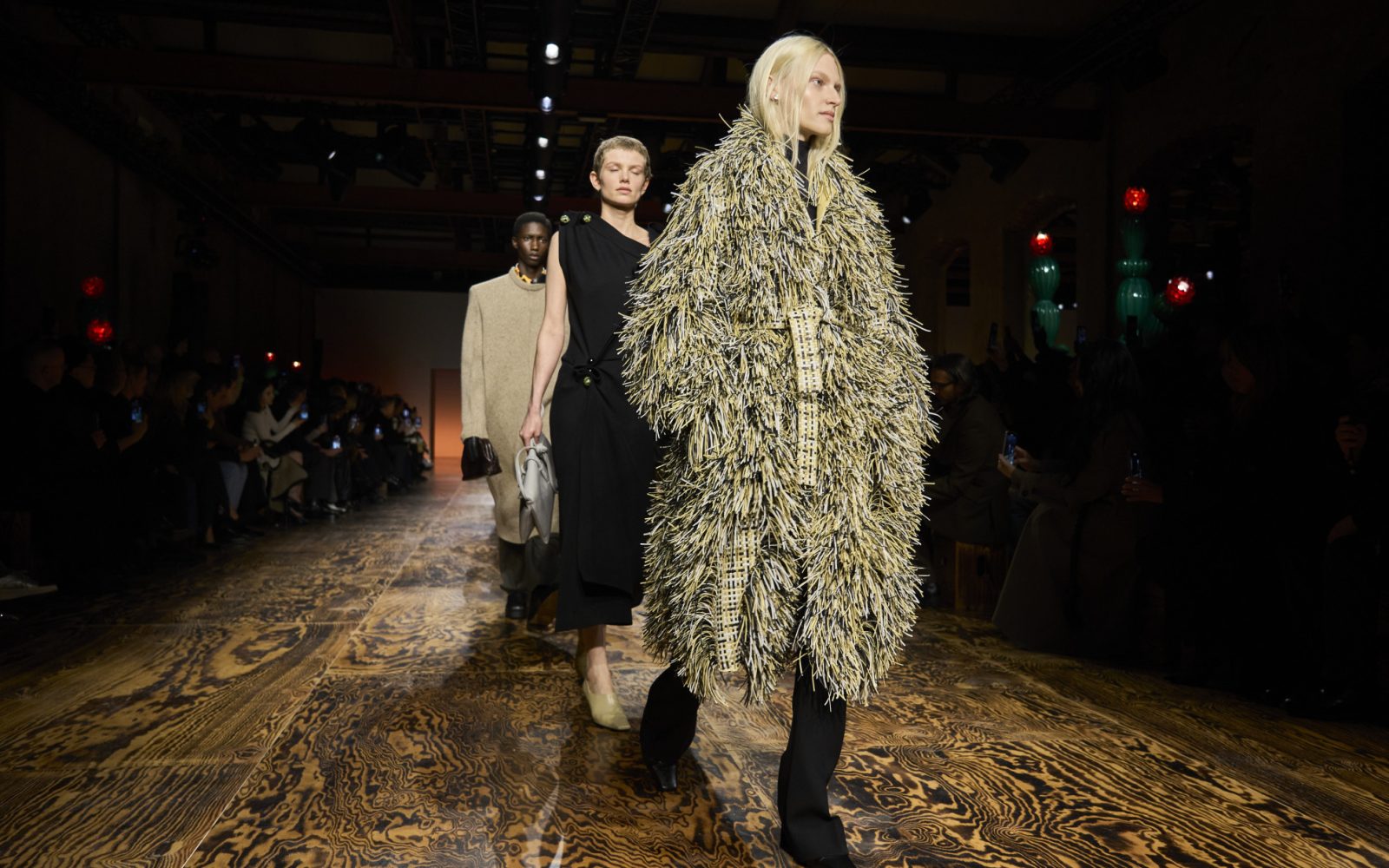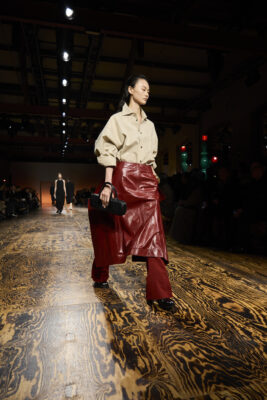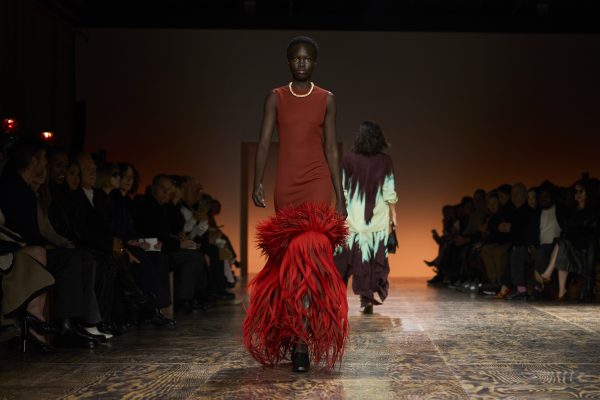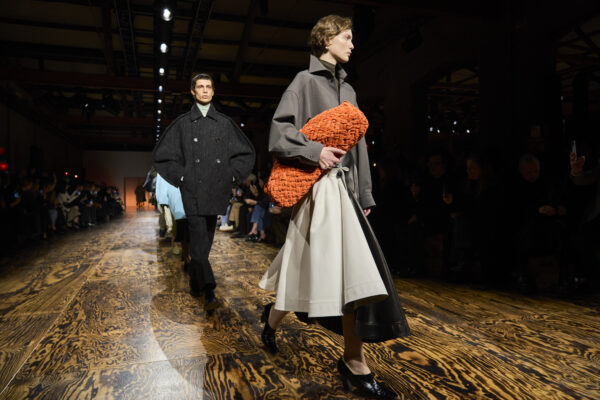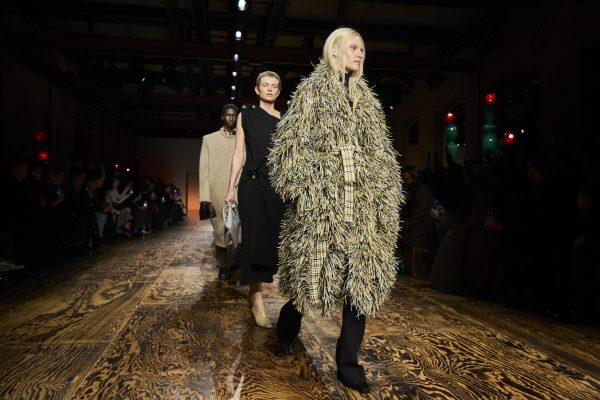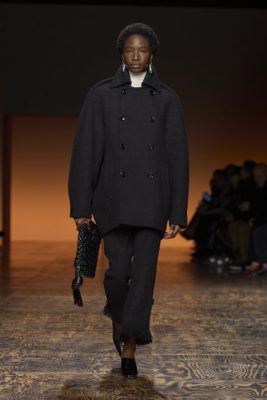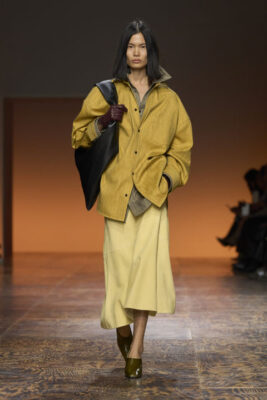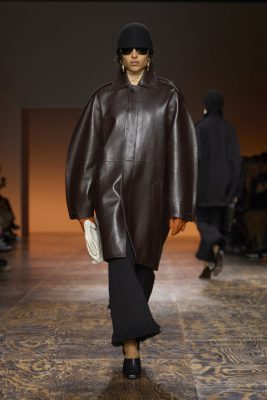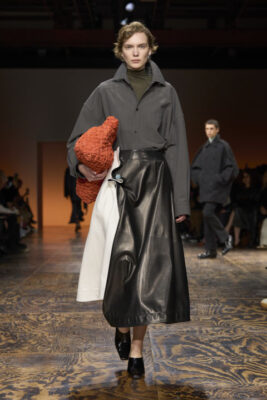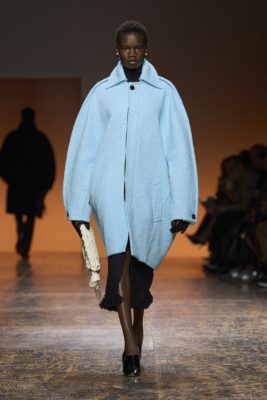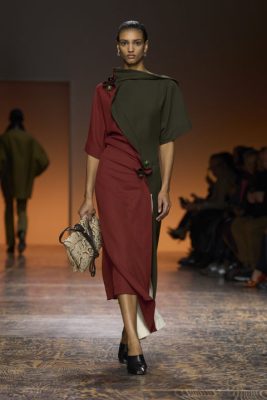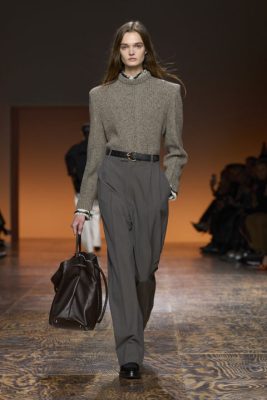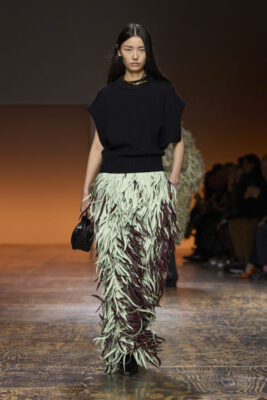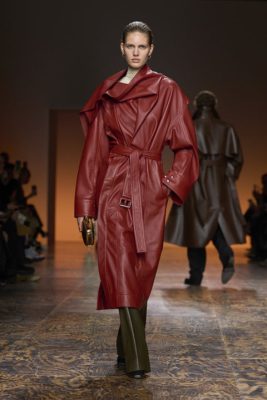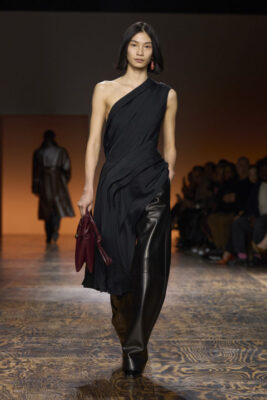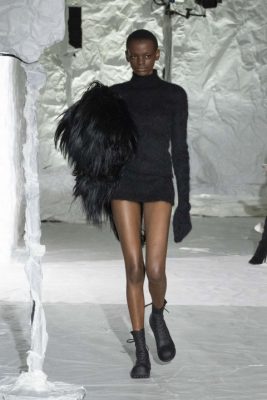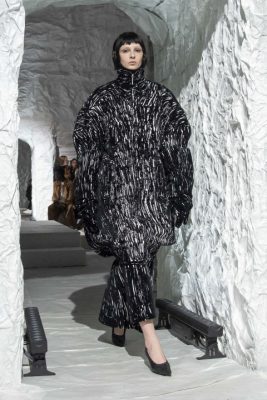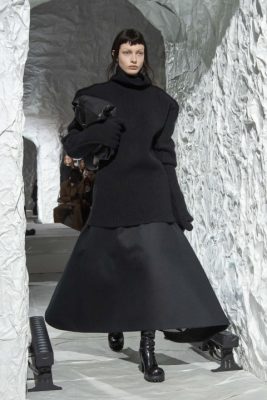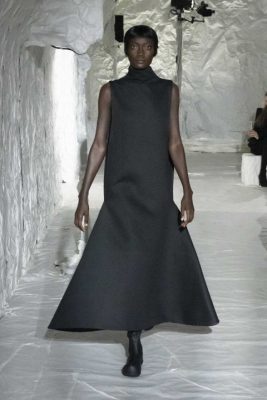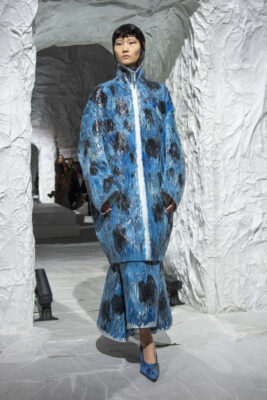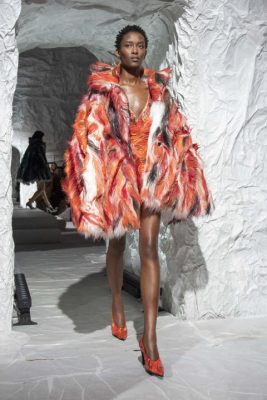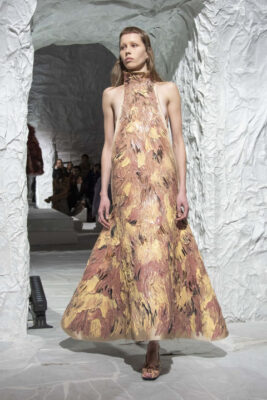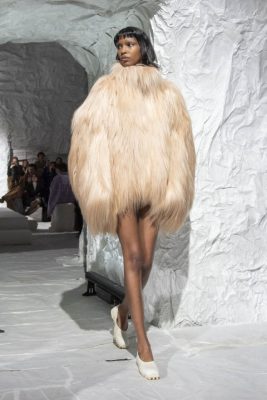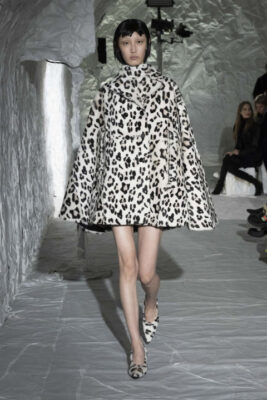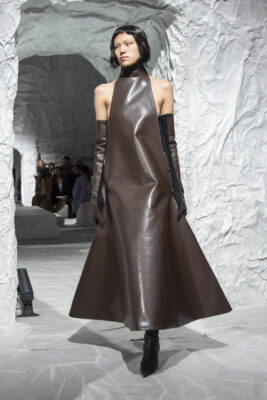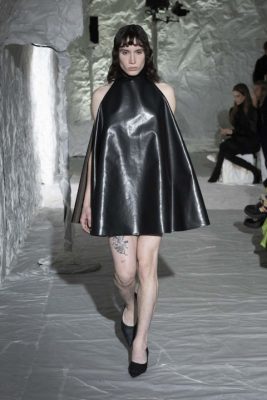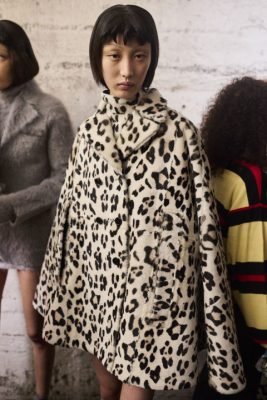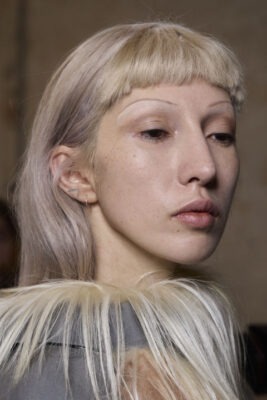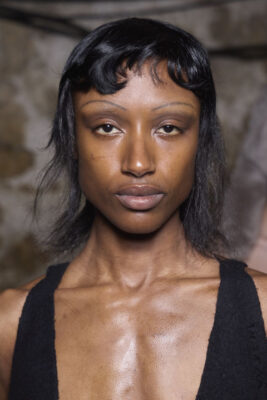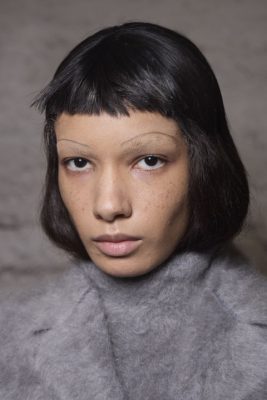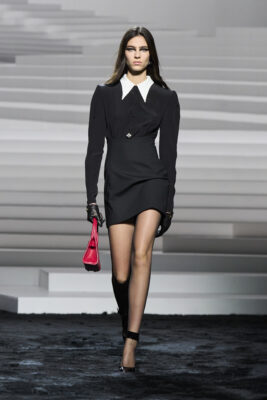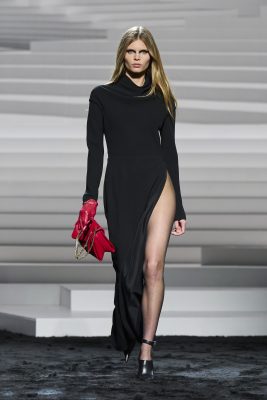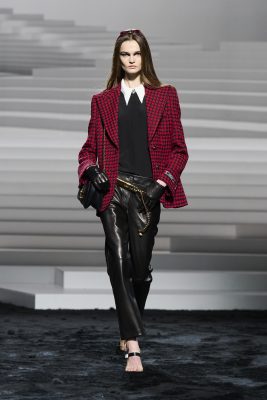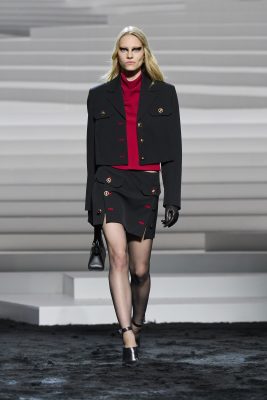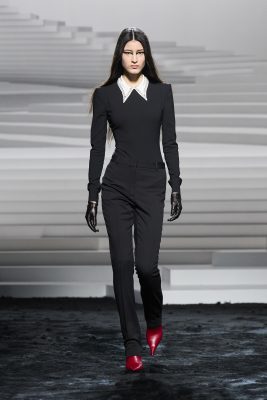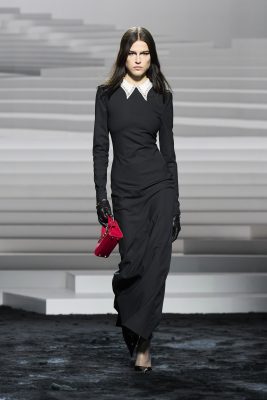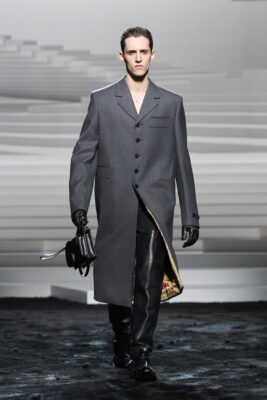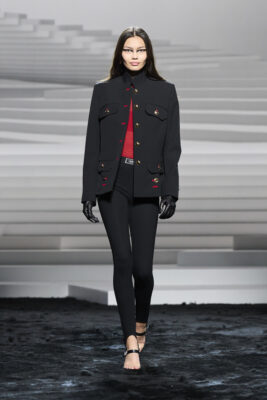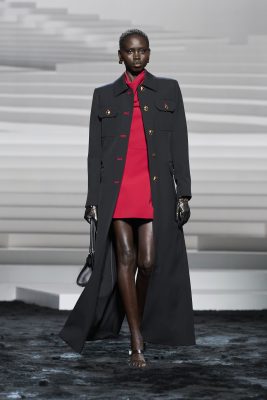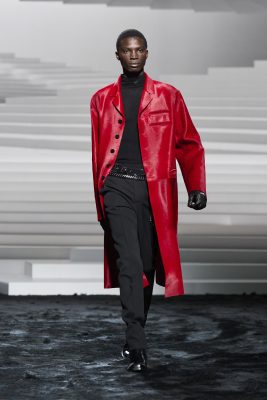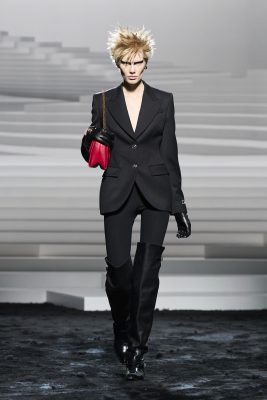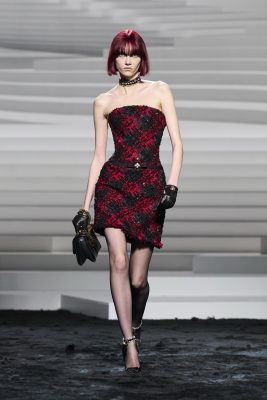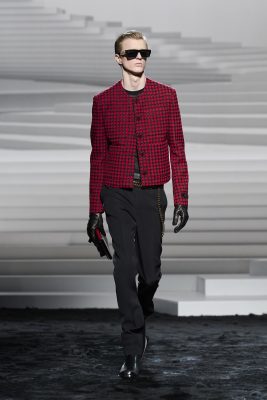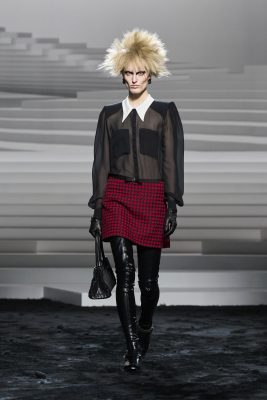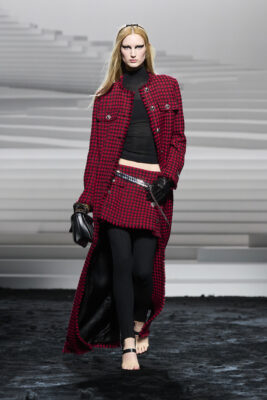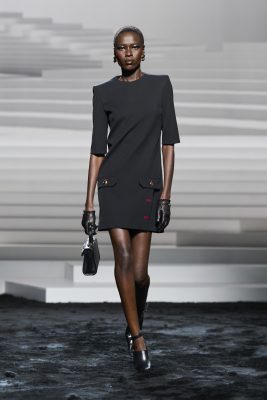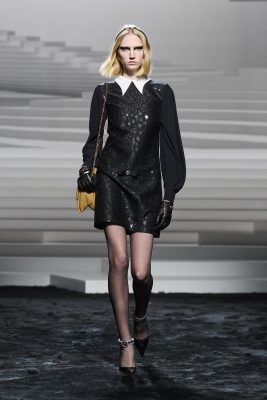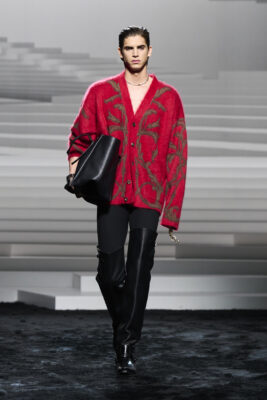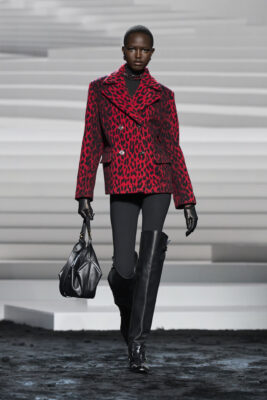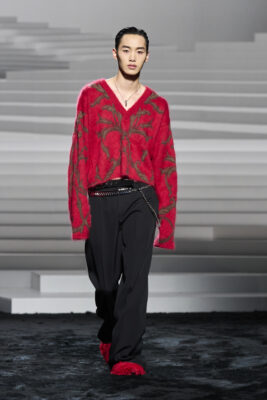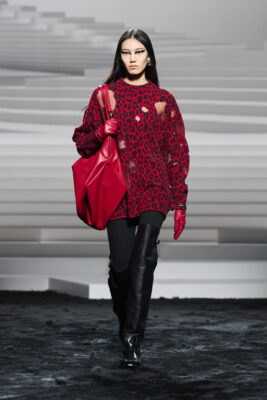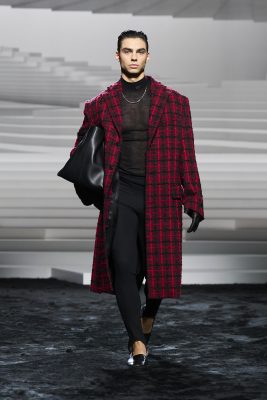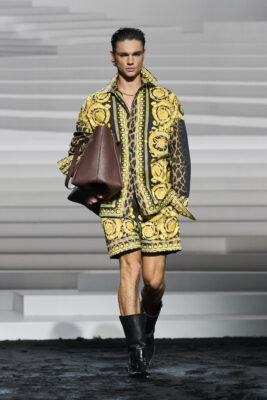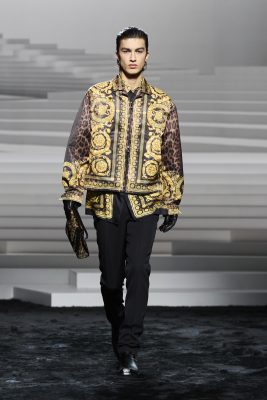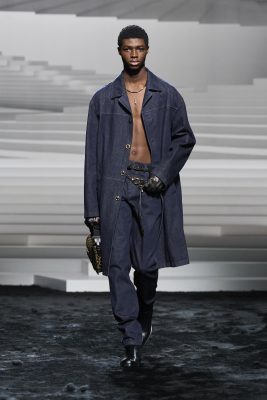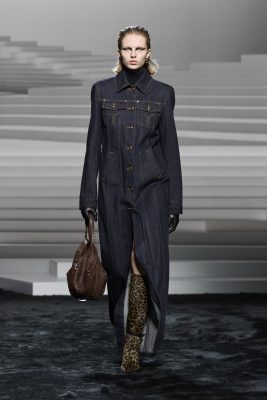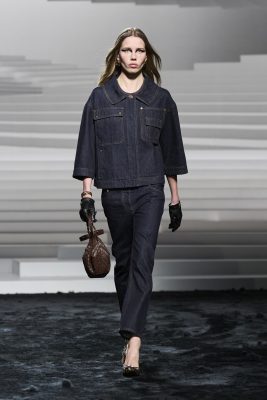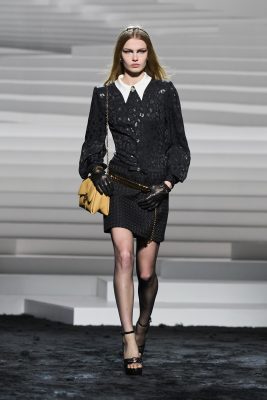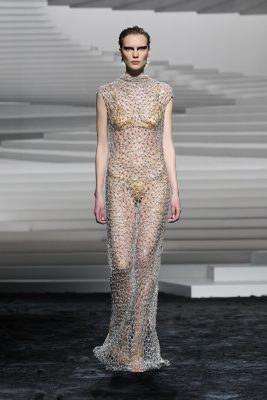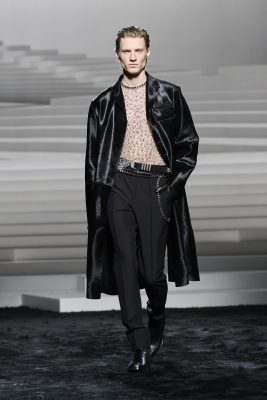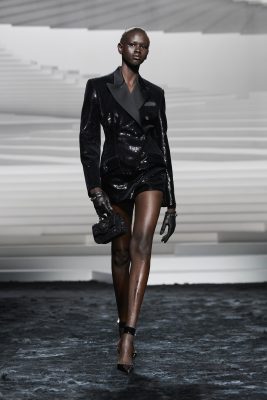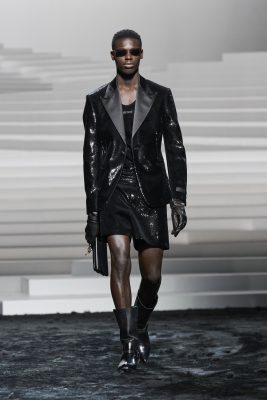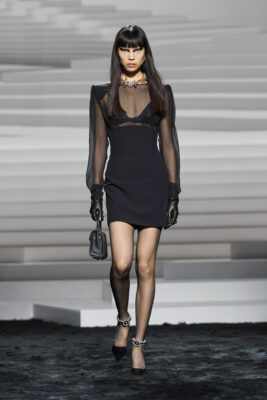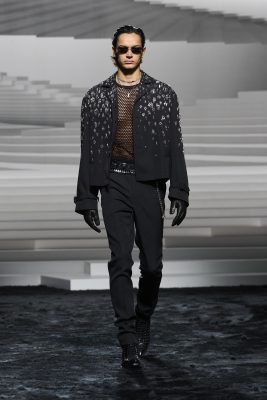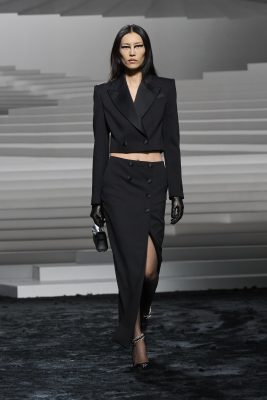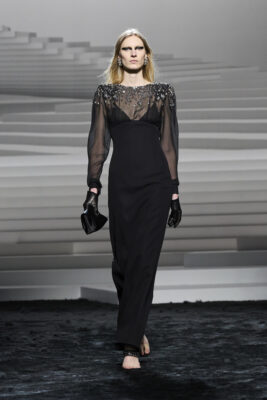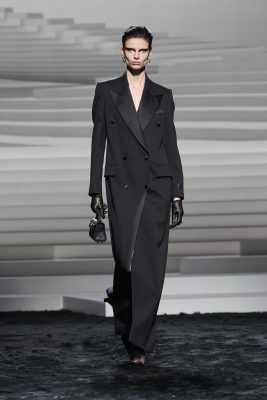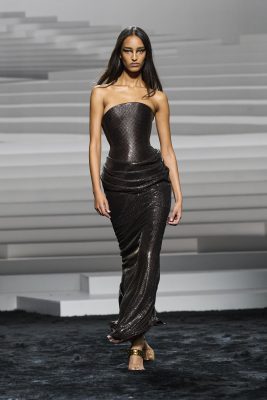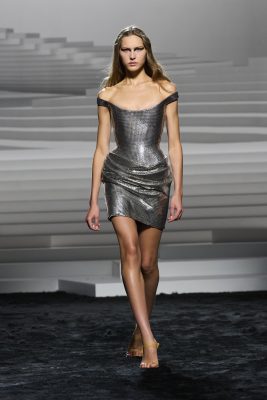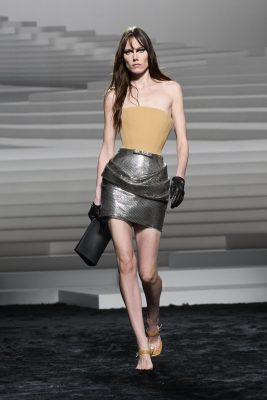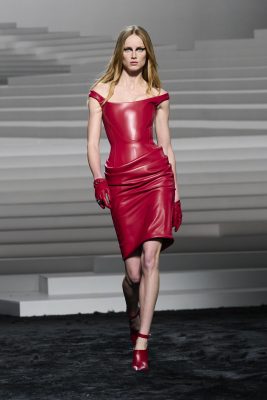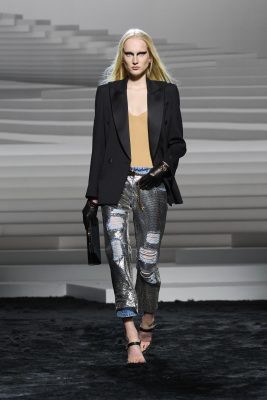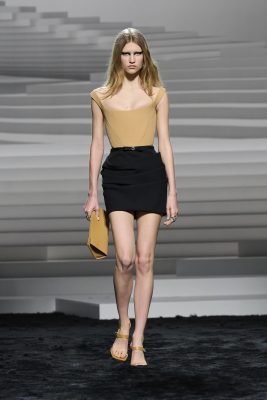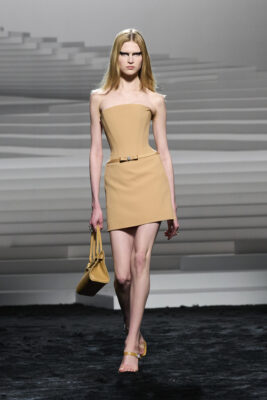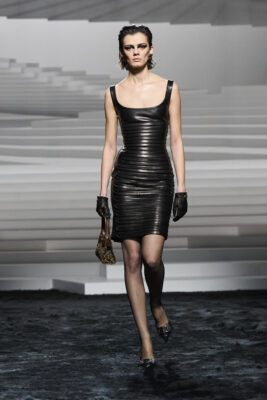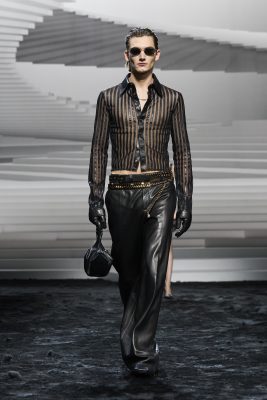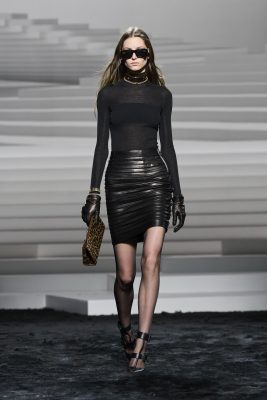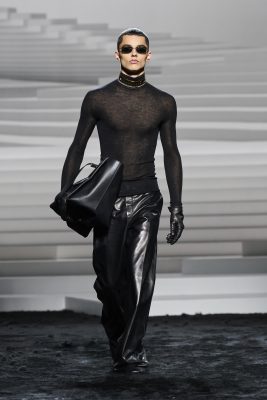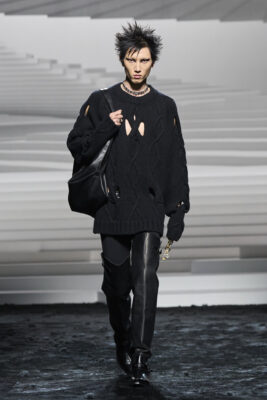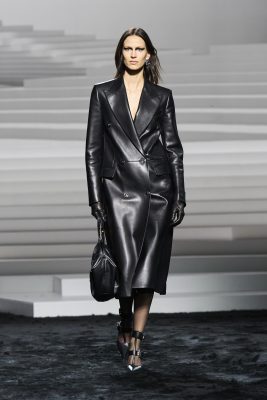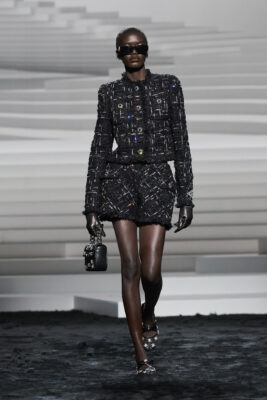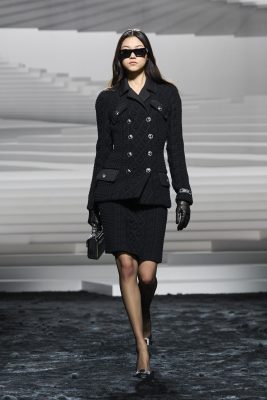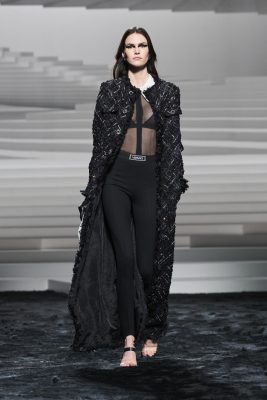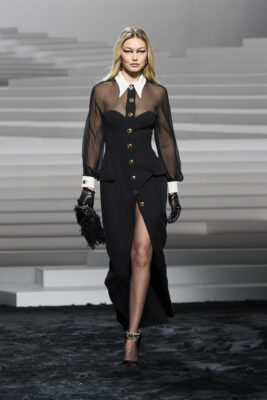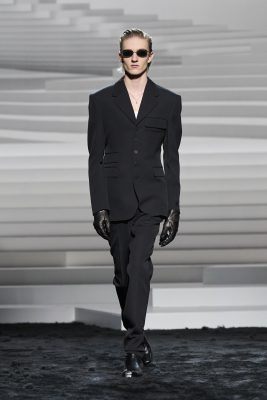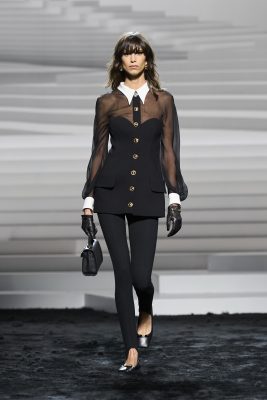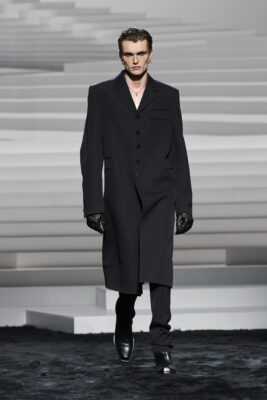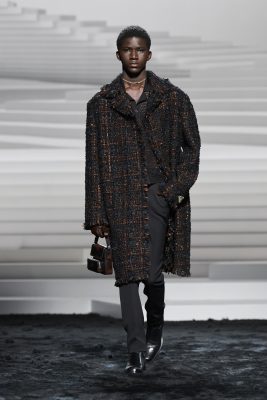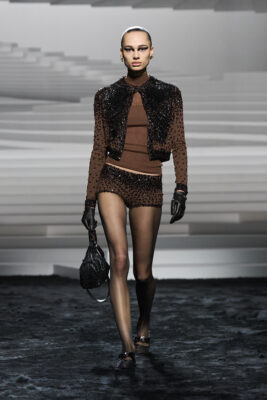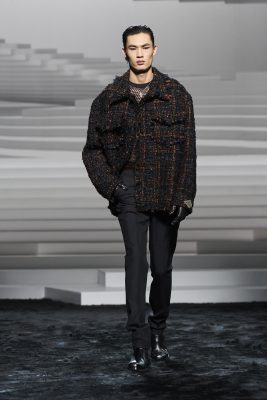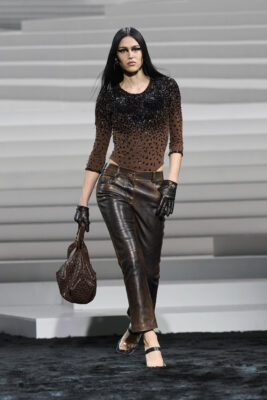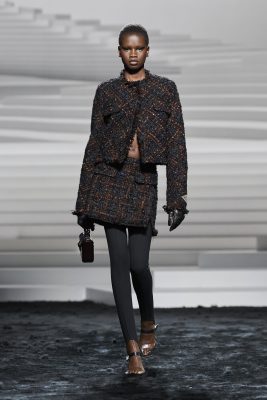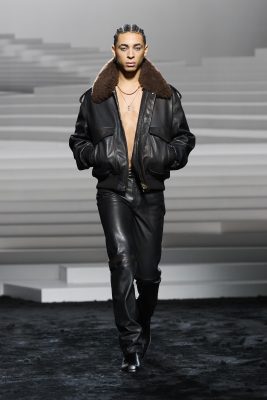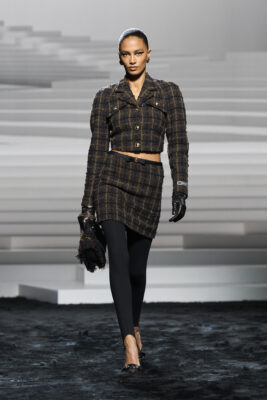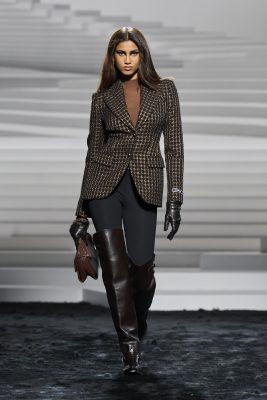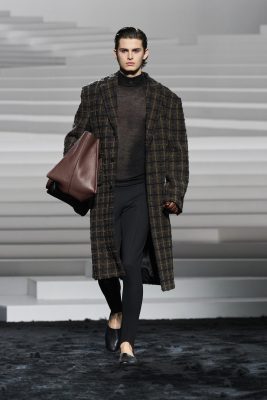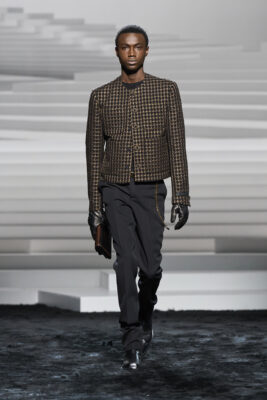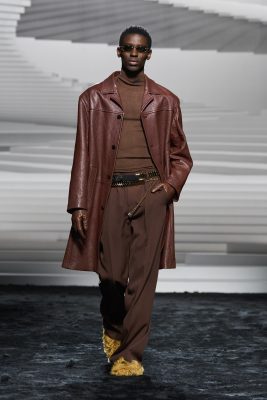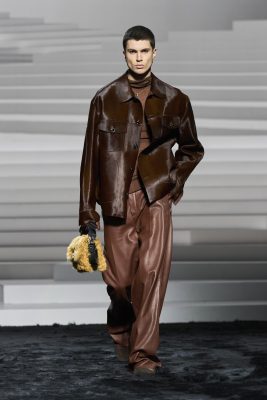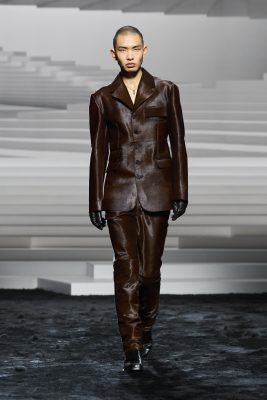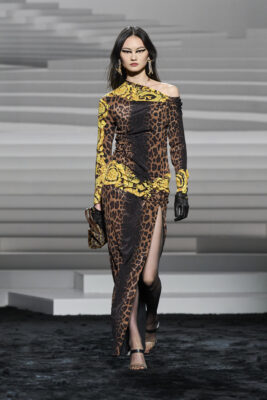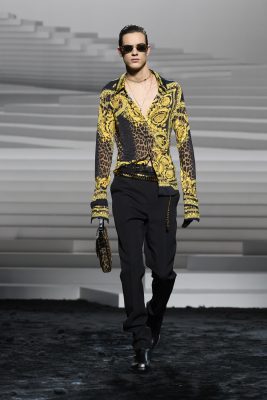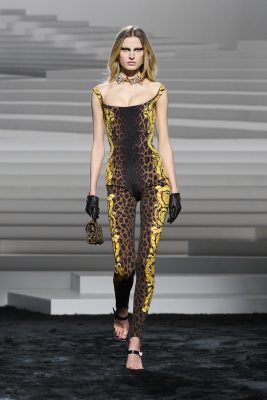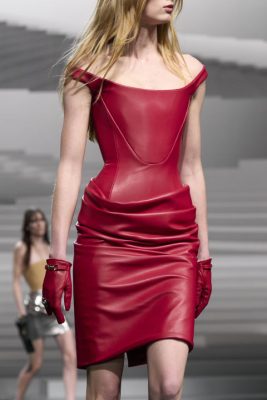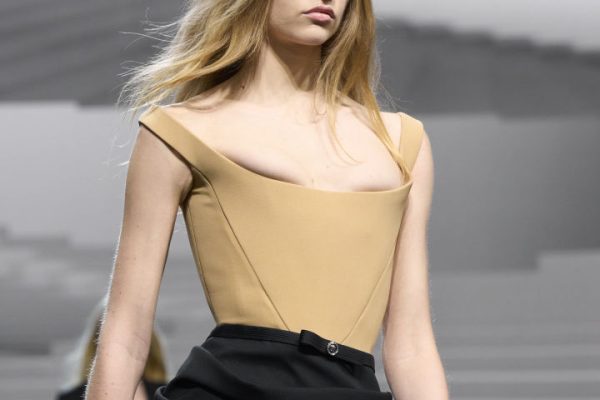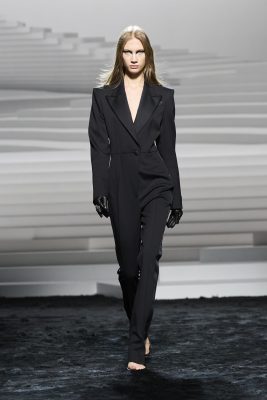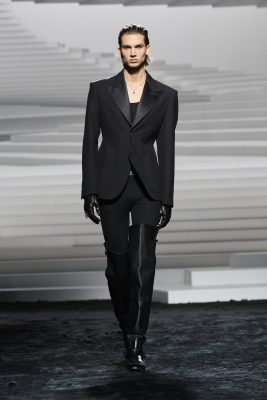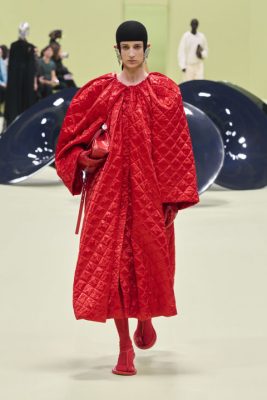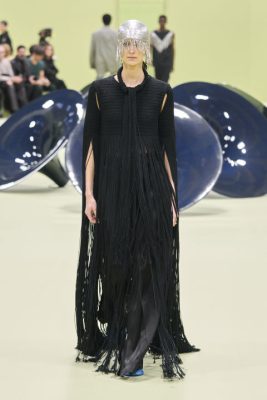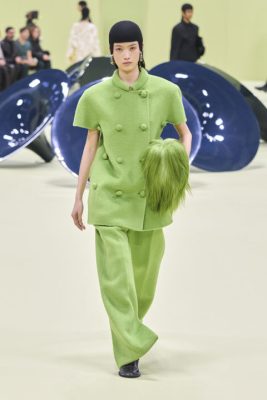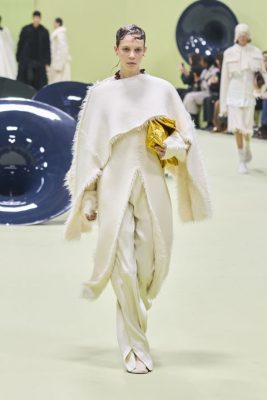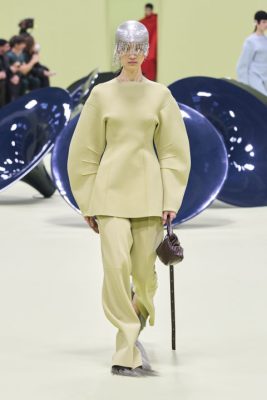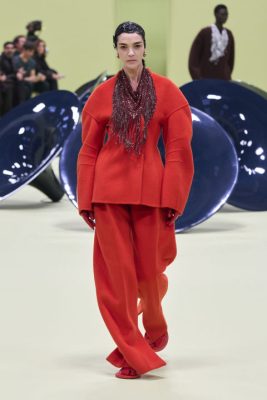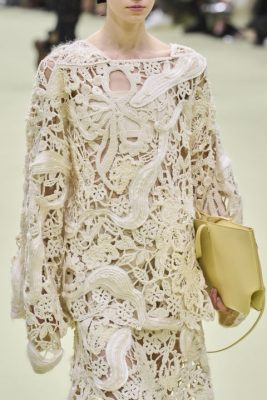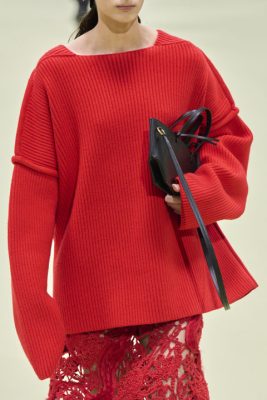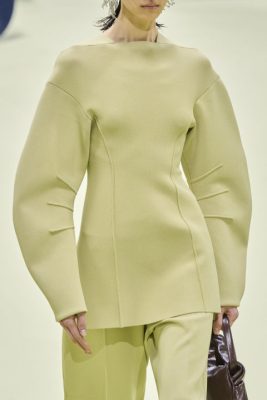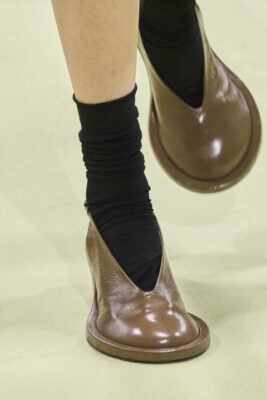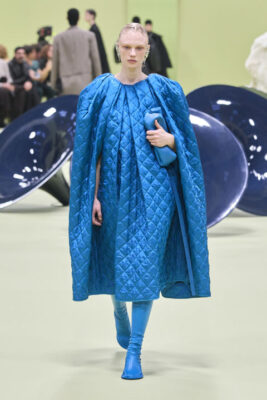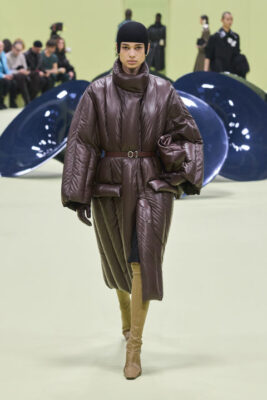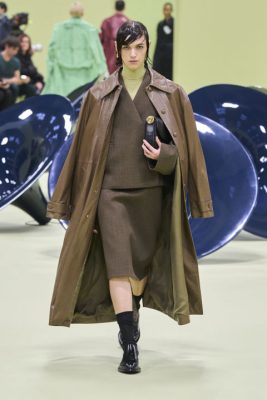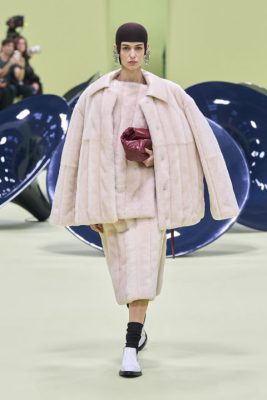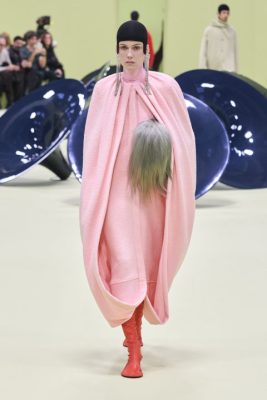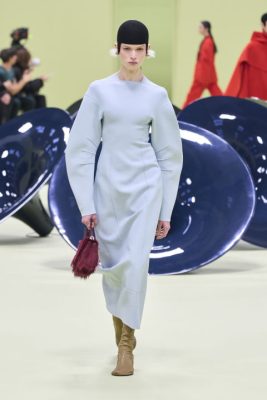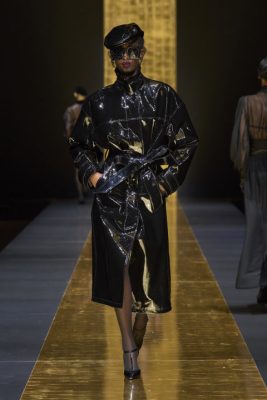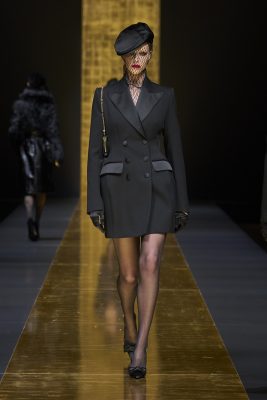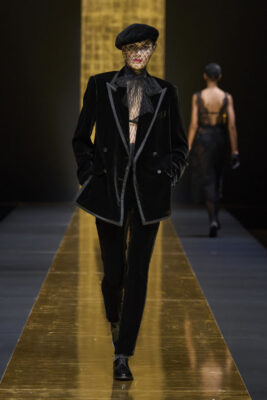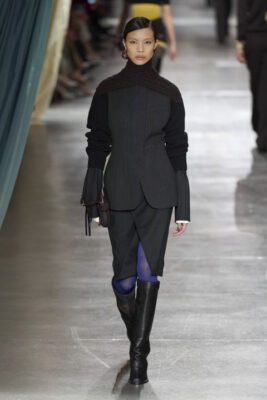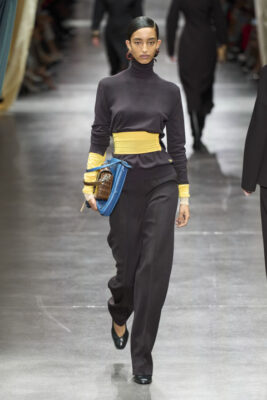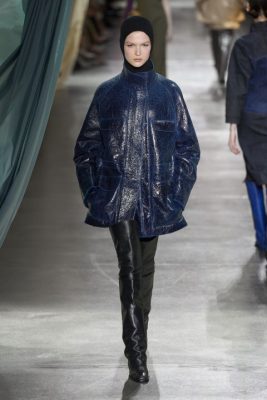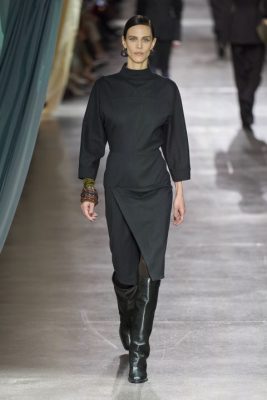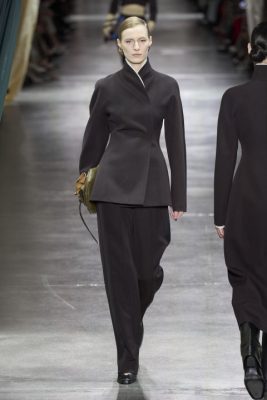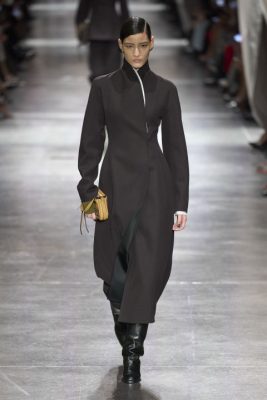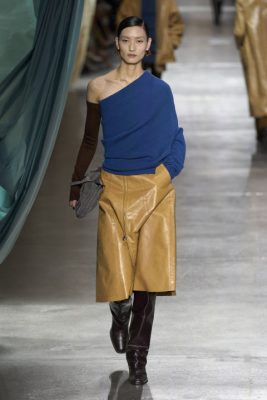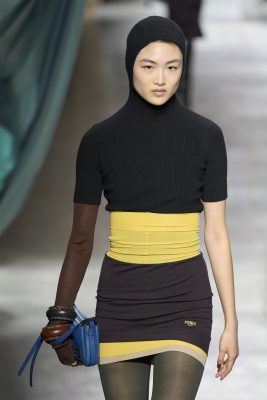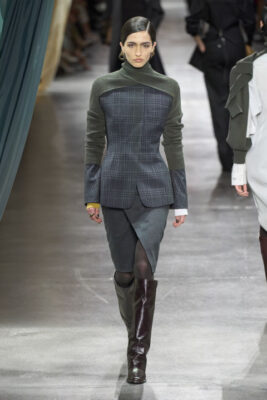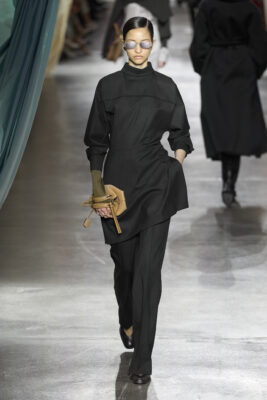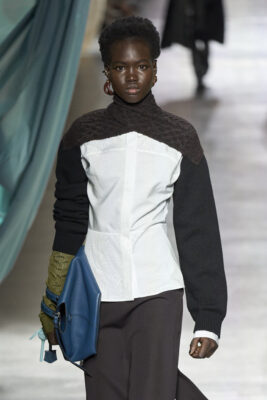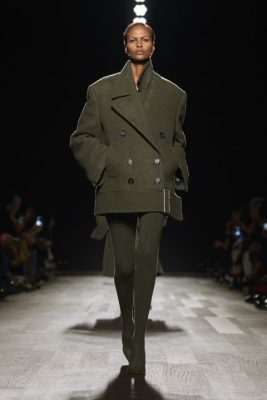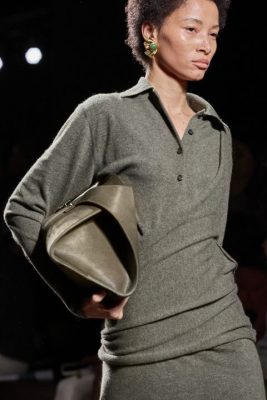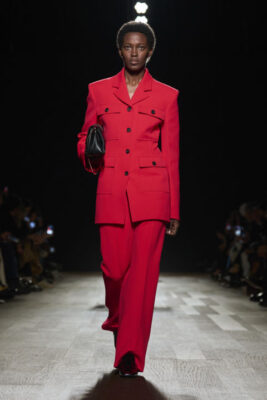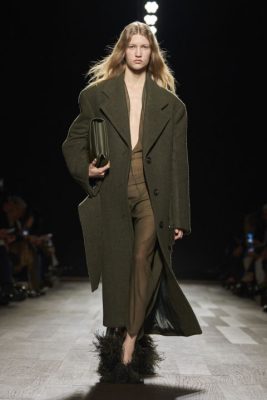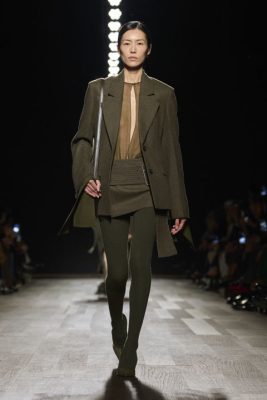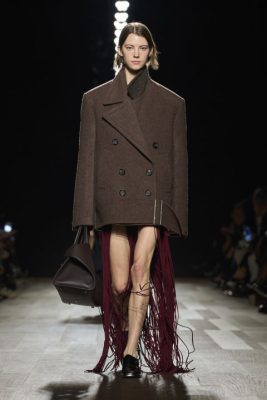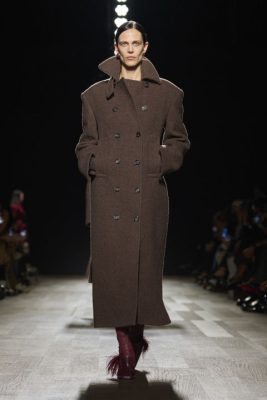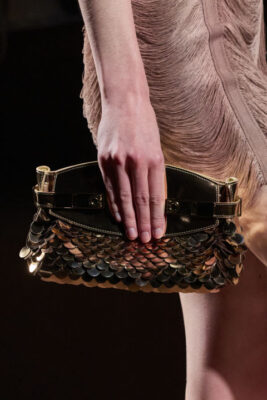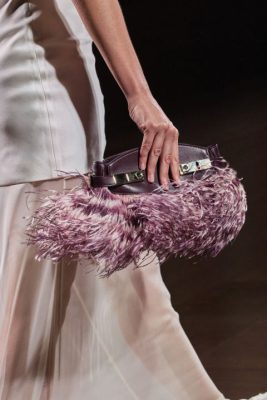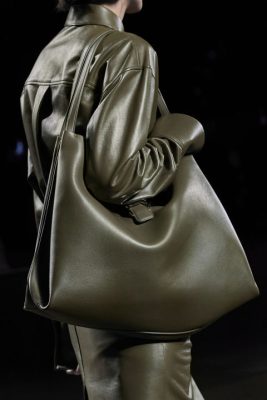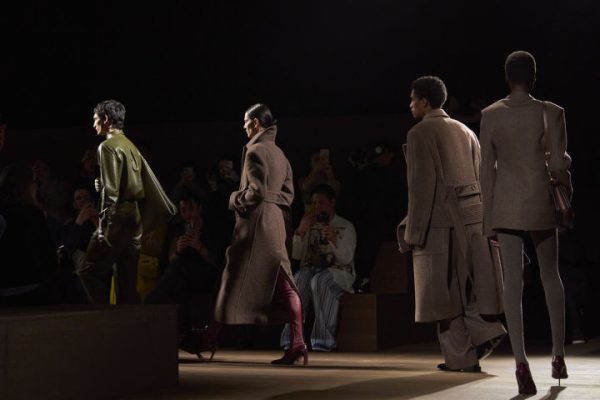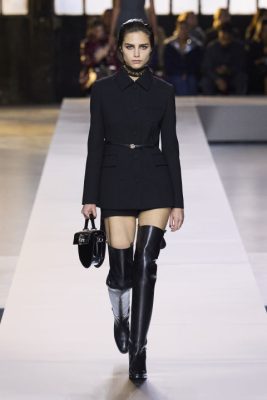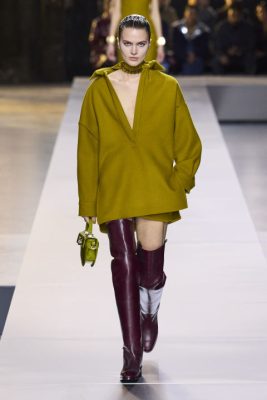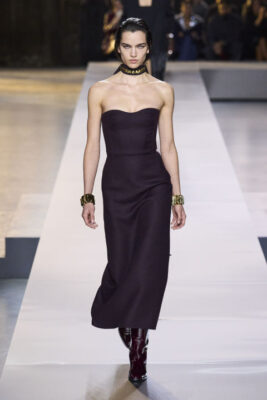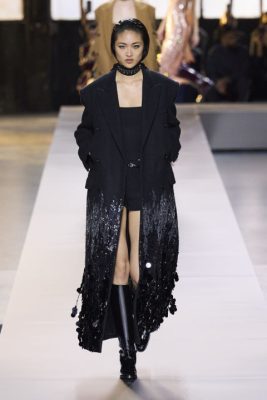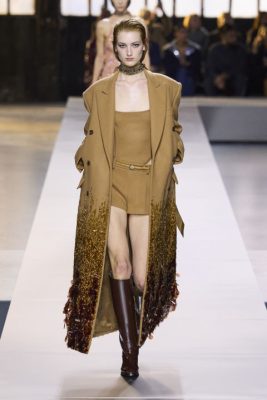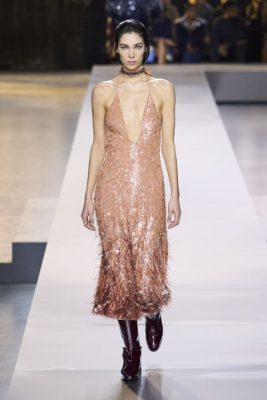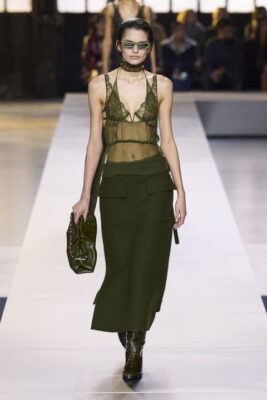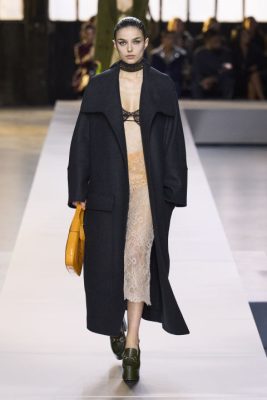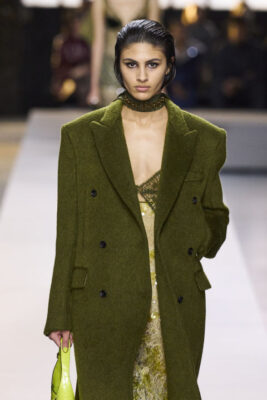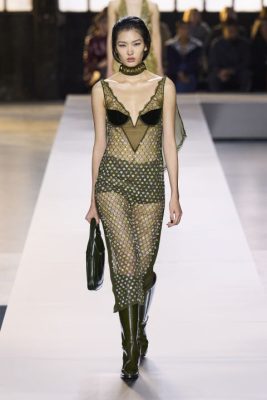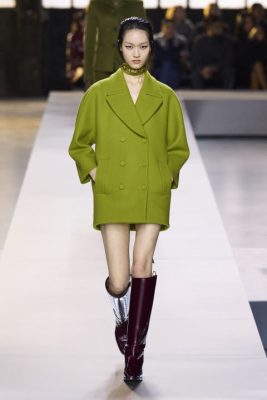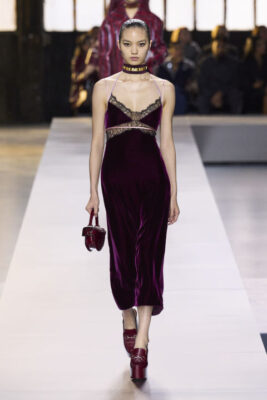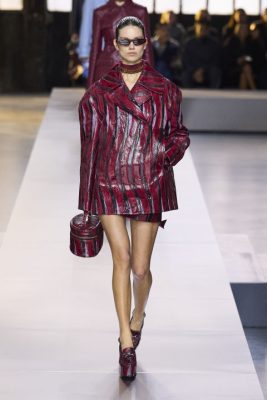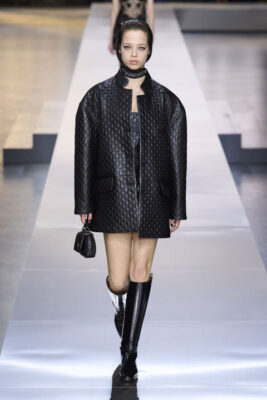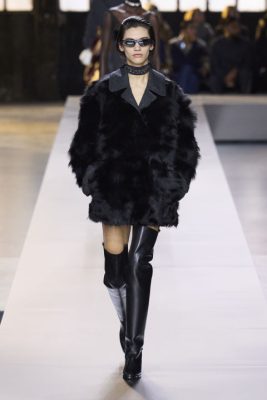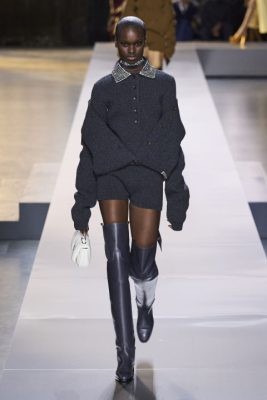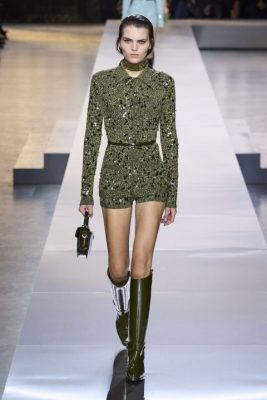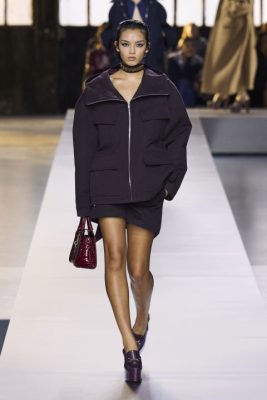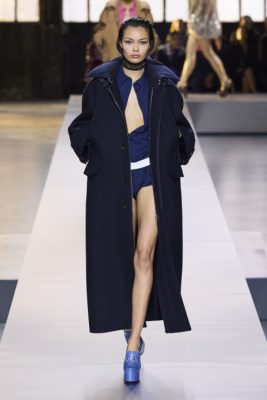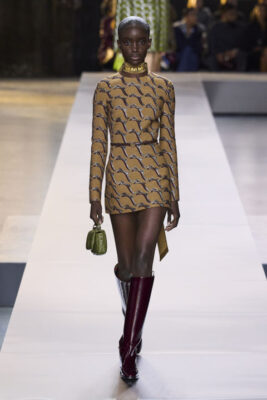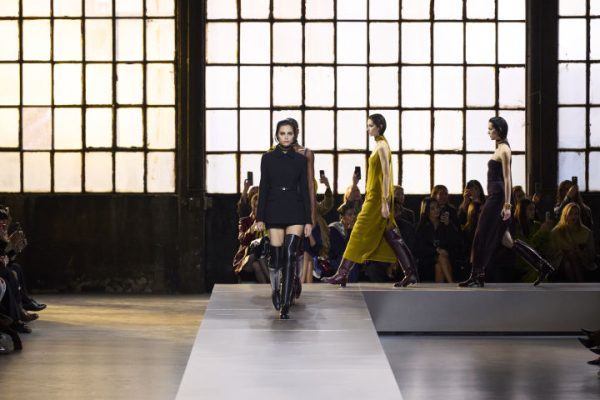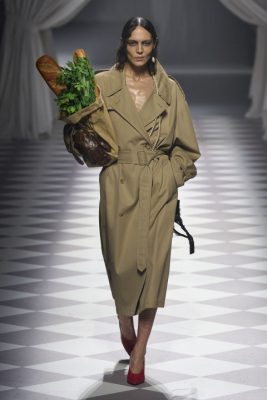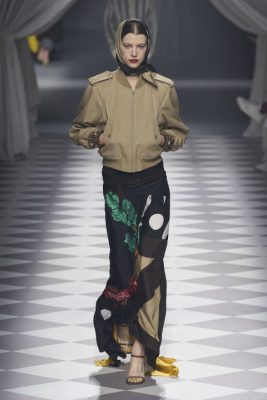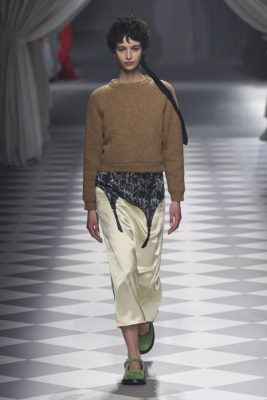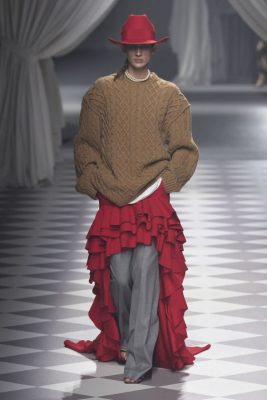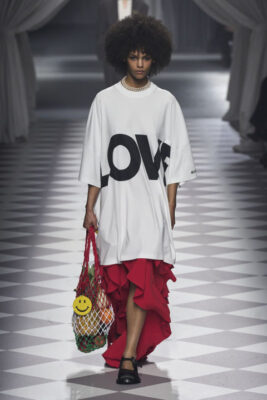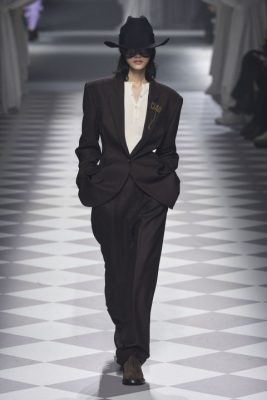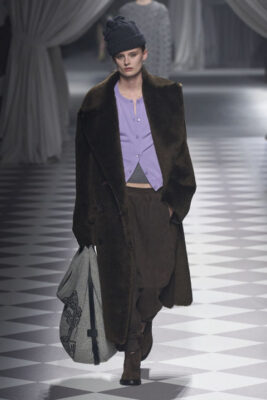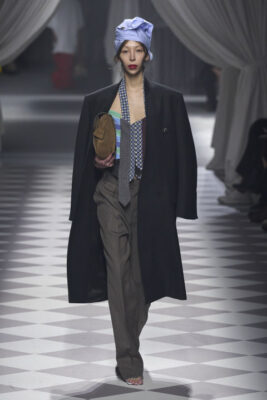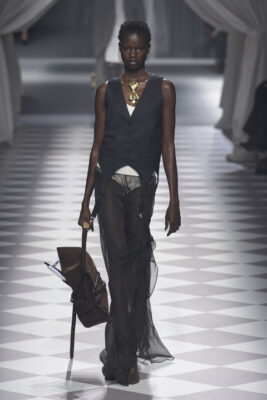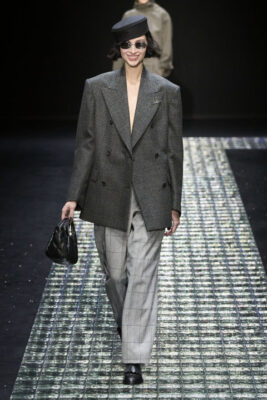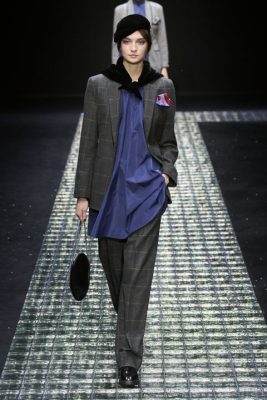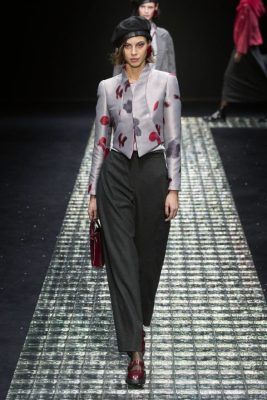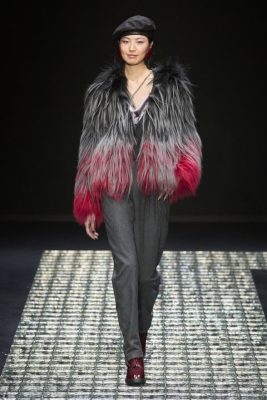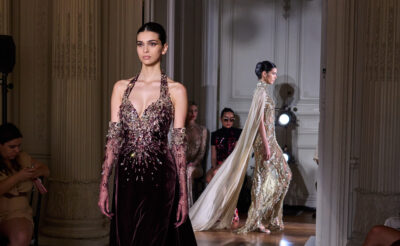
Images: Spolight/Launchmetrics
The influence of past inspirations remained strong at Milan, reflecting the prevailing mood at London Fashion Week. Italian Houses focused on the essence of their brands, demonstrating that real design excellence doesn’t require embellishments or gimmicks to stand out.
Houses like Bottega Veneta and Ferragamo navigated the delicate balance of retaining their loyal fans while infusing their collections with sufficient innovation—a perennial challenge for any brand. Meanwhile, Gucci faces the added pressure of increasing sales and living up to the legacies of past creative directors like Alessandro Michele.
For their part, Miuccia Prada and Raf Simmons presented one of the strongest collections of the season, imbuing the pieces with a retro-futuristic theme that doubled down on house codes while making them fresh and desirable
One designer, however, took a bold approach—Filippo Grazioli for Missoni. He embraced volume with exaggerated knitted tops and oversized, shaggy doughnut collars paired with striped catsuits that extend into stilettos, creating an amusing spectacle. Whether this will translate into real-life wearability remains to be seen. Stripes dominated, drawing from a 1958 archive, reimagined into striking vertical lines across snug outfits and flowing coats with matching leggings. Crystal fringing on asymmetrically cut halter dresses added dynamic flair to the collection.
In contrast, Matthieu Blazy at Bottega Veneta nearly stripped the collection down to the inherent function of clothing, but not quite. Paraphrasing the designer, he aimed to elevate everyday wear into something monumental without resorting to minimalism.
A departure from the previous collection’s lavish details, yet still rich in remarkable craftsmanship, Blazy’s approach was to integrate artistry directly into the fabric, exemplified by “memory” prints derived from layered passport stamps on flowing dresses with tiered skirts. The collection also introduced subtle futuristic prints on practical pieces like cotton shirts and trench coats, blending past influences with forward-looking designs.
Francesco Risso celebrated Marni‘s 30-year milestone with a creative playground that embraced intentional naivety, instinct, and intuition, aiming to break free from conventional fashion wisdom. Risso drew inspiration from Charlie Porter’s book “Bring No Clothes,” echoing Virginia Woolf’s relaxed dress code for countryside retreats. The Marni studio was transformed with white drapes from windows to walls, eschewing mood boards and digital distractions for a purer creative process.
Donatella Versace, with punk in mind, melded the brand’s iconic glamour with spiky hairstyles and bold eyeshadow alongside deliberately distressed knits. The tailoring was precise and impactful, with a bold approach. The collection featured the emblematic broad-shouldered power jacket, explored further through graphic cuts and patterns, culminating in striking tuxedo ensembles that reaffirmed Versace’s allegiance to power dressing. The colour palette was a classic mix of black, white, red, and grey, nodding to a fusion of punk and sophistication.
At Jil Sander, designers Luke and Lucie Meier pursued a theme of enveloping comfort amidst global unrest. Their collection featured rounded shapes, double-faced fabrics, and padded down coats reminiscent of pool inflatables alongside quilt-inspired outerwear. Tailoring was softened, eschewing sharp lines for rich textures that emphasised a sense of cocooning and warmth.
Dolce & Gabbana reimagined the tuxedo, elevating it as the epitome of timeless style. They began with a classic version, stripped it down to its essence, and paired it with a lacy camisole and a delicately tied skirt, setting the tone for the show. The collection explored variations in hem lengths, lapel widths, and silhouettes, ranging from boxy and oversized to cinched waists with padded hips, showcasing the tuxedo’s versatility and enduring elegance.
Kim Jones, the Artistic Director of Couture and Womenswear at Fendi, dug into Fendi’s archives dating back to 1984, reminded of the London fashion scene at that time, such as the Blitz Kids and the New Romantics movements, the adoption of workwear, aristocratic style, and Japanese style.
British Jamaican designer Maximilian Davis’ fall collection for Ferragamo drew inspiration from the 1920s, celebrating freedom through fashion. The collection featured olive green outfits with wide quilted belts, cropped greatcoats, an olive leather shirt and skirt, and thigh-high wader-inspired boots. The heavy outerwear contrasted with the sheerness of the garments they surrounded, creating a dialogue between the provocative and the polite.
Sabato de Sarno’s latest collection for Gucci emphasised coats and their intricate craftsmanship, suggesting this aspect was significant to him. The process of succession in fashion Houses can be challenging, with designers at Gucci and Tom Ford tasked with forging their paths while acknowledging and addressing the legacy of their charismatic predecessors. Peter Hawkings, however, did an excellent job of taking the best elements of Ford’s Gucci years and updating them seamlessly.
Adrian Appiolaza had mere weeks to create a collection for Moschino, succeeding Davide Renne, whose untimely death last November shocked Milan. Appiolaza’s debut, while not outlandish, served as a refresher course on Moschino’s iconic imagery for those more familiar with Jeremy Scott’s near-decade in charge. Scott’s approach was campy, but Moschino himself was more rigorous, loyal to Milanese tailoring even as he poked fun at it. Appiolaza, recently the design director of women’s ready-to-wear at Loewe, proved a worthy successor, his debut marked by a light touch with the legacy that made a significant impression.
Giorgio Armani closed fashion week with a spectacular show. Gina di Bernardo, featured in Armani’s 1980s campaigns, opened the show wearing a technically shaded overcoat with pleated silvery separates embellished with winter flower illustrations. The collection included loose velvet, soft tailored herringbones, oversized outerwear, silk satin jodhpurs, and purely silhouetted gowns decorated with dragonfly embellishments.
Overall, in Milan, the standout was a renewed commitment to the finesse of Italian tailoring. The most memorable collections brought a fresh edge to traditional cuts, notably Prada, Bottega Veneta, and Ferragamo. Most houses clung to their tried-and-true aesthetics, and understandably, the slowdown of luxury in the past year is not a moment for experimentation. That said, it’s essential to remember that fashion inherently carries the torch of reinvention, offering comfort in the hope of perpetual renewal.

